Latest Update: July 8 – iPhone 17 Air to come in new light blue finish
This year, Apple is expected to discontinue the iPhone "Plus" device in its iPhone 17 lineup to make way for an iPhone "Air," so-called because of its ultra-thin profile.

Below is a compilation of every rumor and leak we have registered from reputable sources thus far about Apple's new entry in its flagship smartphone lineup.
iPhone 17 "Air"?
About the Name
There has been some uncertainty about Apple's strategy for the new slimmer iPhone model and its position in the lineup. YouTuber Jon Prosser was first to suggest that the device could be positioned as an "iPhone Air." Bloomberg's Mark Gurman has since come out in agreement about the naming, which Apple could use to boost sales.
Replacing the iPhone "Plus," which, like the "mini" models before it, has not sold well, the iPhone 17 Air will represent a new approach in Apple's iPhone lineup, offering a device with a substantially thinner design that sits between the iPhone 17 and iPhone 17 Pro.
Gurman believes that the design of the iPhone 17 Air will "just be a step toward something better" since Apple will eventually want to "squeeze the power of a Pro model into this smaller design." However, he does not expect this to occur before 2027 at the earliest.
Device Thickness Rumors
Thinner Than iPhone 6
According to The Information, Apple's all-new iPhone 17 model will have a "significantly thinner" design with an aluminum chassis, rather than a titanium casing like Apple's Pro models.
There have been mixed rumors on just how thin Apple will be able to make it. Rumors have hovered around 6mm, however in a recent report, reliable Apple analyst Ming-Chi Kuo said that he expects the iPhone to measure in at about 5.5mm at its thinnest point. At 5.5mm, the iPhone 17 Air would be the thinnest iPhone to date – thinner than the 6.9mm iPhone 6 that came out in 2014. 5.5mm would be approximately 30% thinner than the iPhone 16, which measures in at 7.8mm thick, and 33% thinner than the iPhone 16 Pro models, which are 8.25mm thick.

The device is said to have only a single speaker, in the earpiece, as there is apparently not enough room for a second speaker on the bottom edge. The Information also claims that the device will feature a narrower Dynamic Island, though this specific claim has since been contested. Internally code-named D23, the device's redesign has been described as a major one equivalent to the iPhone X.
Display Size
Smaller Than Plus Model
The first details about the size of the device's display arrived courtesy of Haitong International Securities analyst Jeff Pu, who said it would be 6.6 inches. Apple analyst Ming-Chi Kuo has since corroborated Pu's claim.
Display Supply Chain Consultants (DSCC) analyst Ross Young says the device will feature a 6.55-inch display, which could be rounded up to 6.6 inches. Complicating matters, YouTuber Jon Prosser more recently claimed that the iPhone 17 Air will be equipped with a 6.7-inch display, rather than a 6.6-inch display as previously rumored. For context, the existing iPhone 16 Plus has a 6.7-inch display. However, in response to Prosser's prediction, Young reiterated his 6.55-inch display size claim for the iPhone 17 Air.
In mid-March 2025, we reported on a rumor out of China claiming that the iPhone 17 Air shares the same dimensions as the iPhone 17 Pro Max, with the only difference being in the thickness of the devices. Days later, Bloomberg reported that Apple prototyped a larger ultra-slim iPhone 17 Air with a 6.9-inch display, but ultimately decided not to go ahead with the device because of fears that it could be susceptible to bending. It's quite possible the China-originating rumor had its origins in Apple's canned prototype.
The iPhone 17 Air could have ultra-thin bezels as could the entire iPhone 17 series, according to one leaker. Apple says the iPhone 16 Pro and iPhone 16 Pro Max feature the thinnest bezels around the screen of any product it has ever released, so perhaps we can expect a similar sized bezel for the Air.
Always-On Display
ProMotion Support
Apple intends to expand ProMotion to the entire lineup in 2025, including the iPhone 17 "Air," allowing all iPhone 17 models to ramp up to a 120Hz refresh rate for smoother scrolling and video content when necessary. This will be enabled by Apple's use of Samsung's high performance "M14" OLED display panel.
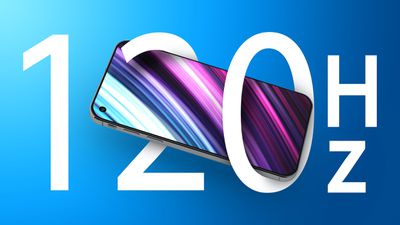
Previously, only "Pro" models in Apple's iPhone lineup used the M1 OLED panel, which is why they have exclusively supported ProMotion. Notably, ProMotion would also enable the display on the iPhone 17 "Air" to ramp down to a more power-efficient refresh rate as low as 1Hz, allowing for an always-on display that can show the Lock Screen's clock, widgets, notifications, and wallpaper even when the device is locked.
Camera Redesign
Relocated Lens
The Information claimed that the iPhone 17 Air will have cameras in locations we haven't seen before on an iPhone. According to a May report, the rear cameras could be moved to the "top center" of the device. Some Android phones like Google's Pixel 9 Pro have rear cameras in a top-center position, or in a runway-style horizontal bar, but Apple's iPhone camera system has occupied the top-left corner ever since the 2007 model.
Adding to the intrigue, Apple analyst Ming-Chi Kuo has claimed that the device will have only one camera, as opposed to two or three.

Since then, YouTube channel Front Page Tech has revealed the alleged design of the iPhone 17 Air. The renders show an all-new camera bar across the top of the device's rear shell. On the left side of the bar is a single rear camera, and on the right side there is a microphone and an LED camera flash.
Most recently, a CAD render of all the devices in Apple's upcoming iPhone 17 lineup has been shared online by leaker Majin Bu, specifically showing the allegedly different rear camera system designs of the standard iPhone 17, including the all-new ultra-thin iPhone 17 Air. The CAD shows the described horizontal camera bar design accommodating the single camera lens.

Weibo-based leakers Fixed Focus Digital, Ice Universe, and Digital Chat Station have all backed the accuracy of the CAD image, based on their own information from Apple's supply chain in China. "The appearance is basically like this," commented Digital Chat Station in reference to the image.
More Durable Screen
Anti-Reflective Coating
All iPhone 17 models will feature an anti-reflective display that is more scratch-resistant than Apple's Ceramic Shield found on iPhone 15 models, according to Chinese Weibo leaker Instant Digital.
The outer glass on the iPhone 17 series is said to have a "super-hard anti-reflective layer" that is "more scratch-resistant." It's not clear whether Apple is planning to adopt the Gorilla Glass Armor that Samsung uses in its Galaxy S24 Ultra, but the description of Corning's latest technology matches the rumor.
Improved Front Camera
Better Selfies
According to Apple analyst Ming-Chi Kuo, the entire iPhone 17 lineup will feature a 24-megapixel front-facing camera with a six-element lens. The iPhone 14 and 15 feature a 12-megapixel front-facing camera with five plastic lens elements, and the iPhone 16 lineup features the same hardware.
The upgraded resolution on the iPhone 17 will allow photos to maintain their quality even when cropped or zoomed in, while the larger number of pixels will capture finer details. The upgrade to a six-element lens should also slightly enhance image quality.
More RAM
Haitong analyst Jeff Pu has claimed the iPhone 17 Air will feature 8GB of RAM, compared to 6GB of RAM on the iPhone 15 Plus. However, more recently, Ming-Chi Kuo has said that all iPhone 17 models will be equipped with 12GB of RAM, including the Air.

It's worth noting that all iPhone 16 models (including the new iPhone 16e) are fitted with 8GB of RAM – a hardware requirement of on-device Apple Intelligence – so it's almost a surety that the slim device will also have at least this amount of memory.
Next-Gen Processor
Better Performance
According to The Information and Haitong International analyst Jeff Pu, the device will be equipped with Apple's A19 chip, which is likely to be based on an optimized version of TSMC's 3nm process, possibly N3P or N3X.
![]()
In contrast, the iPhone 17 Pro and iPhone 17 Pro Max are expected to include an A19 Pro chip. Compared to earlier versions of 3nm chips, the N3P chips offer increased performance efficiency and increased transistor density.
Battery Life
Questions Remain
According to Bloomberg's Mark Gurman and industry analyst Ming-Chi Kuo, the iPhone 17 Air will utilize the same C1 modem that recently debuted in the iPhone 16e. The C1 is Apple's first custom-designed modem chip, and should bring significant advantages to the upcoming iPhone 17 Air.
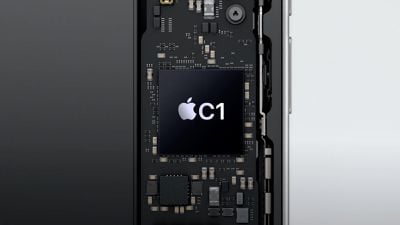
The C1 is the most power-efficient modem ever featured in an iPhone, and promises very good battery life even within the frame of the iPhone 17 Air's ultra-thin design. According to Apple's tech specs, the iPhone 16e offers up to 26 hours of battery life for video playback, compared to up to 22 hours for the standard iPhone 16. This efficiency comes from Apple's complete control over the modem's design and integration with its custom silicon. The only minor drawback to the C1 is that it does not support mmWave.
The iPhone 17 Air could become the first Apple smartphone to adopt advanced battery technology, with Japanese supplier TDK preparing to ship its new generation of silicon-anode batteries by the end of June. One leaker has claimed the device's battery capacity is 2,800mAh, which wouldn't be far off the iPhone 12, which has a 2,815mAh battery.
Bloomberg reporter Mark Gurman has said the iPhone 17 Air will provide battery life that is "on par with current iPhones." However, according to a report by The Information, the device will have "worse" battery life compared to previous iPhone models, which could influence Apple's decision to release a battery case as an optional accessory for the iPhone 17 Air.
Camera Control
Photography Button
The iPhone 17 Air will feature the same Camera Control button that iPhone 16 models have on the right-side of the device, according to Bloomberg's Mark Gurman. The button provides quick access to the camera and related settings, but some people find the button's touch sensitivity finicky, and many users disable it.
Wi-Fi 7 Support
For Enhanced Connectivity
Apple will use its own custom-designed Wi-Fi chip in all upcoming iPhone 17 models, including the iPhone 17 Air, according to industry analyst Ming-Chi Kuo. Kuo said the switch to in-house Wi-Fi chips will "enhance connectivity across Apple devices" while also giving Apple a cost reduction.
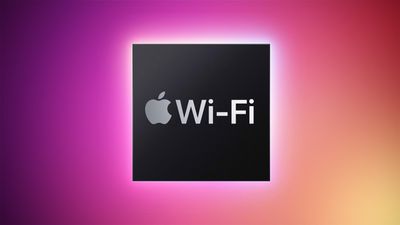
Apple's custom wireless chip will support Wi-Fi 7 specification, according to Jeff Pu, an analyst who covers companies within Apple's supply chain. All current iPhone models are equipped with a combined Wi-Fi and Bluetooth chip supplied by Broadcom.
For Wireless Charging
Despite the thinness of the iPhone 17 Air, the device will support MagSafe, according to a reliable Chinese leaker. The leaker said that all four iPhone 17 models this year will support MagSafe for magnetic wireless charging and magnetic accessories. Apple dropped MagSafe from the low-end iPhone 16e, which left some uncertainty that the technology would feature in the iPhone 17 Air.
Notably, Apple appears to be moving to the next-generation Qi 2.2 wireless charging standard, according to regulatory filings, which increases the likelihood that the upcoming iPhone 17 models will support the new charging standard. Qi 2.2 is technically capable of up to 50W charging output – but that doesn't guarantee Apple's iPhones will charge at the maximum 50W. In addition to faster charging, Qi 2.2 offers improved magnetic alignment and charging efficiency compared to its predecessor. The standard also features backward compatibility with older Qi chargers.
eSIM Worldwide
No SIM Card Slot
The slim device will lack a physical SIM card slot, and instead rely entirely on digital eSIM technology, according to Ming-Chi Kuo. In the U.S., all iPhone 14, iPhone 15, and iPhone 16 models lack a physical SIM card tray already, but all iPhones sold in other countries still have one for now.
The lack of a SIM card slot in all forthcoming iPhone 17 models worldwide has been previously reported, but it is not clear how the devices would be sold in the Chinese market, where the use of eSIMs in smartphones is not currently authorized.
Color Options
Unique Blue Finish
A new light blue finish is rumored to be the signature color of the all-new ultra-thin iPhone 17 Air, according to a leak from Asia. The tip, shared by Weibo leaker "Fixed Focus Digital," suggests that this blue shade will be central to Apple's marketing for the new device, which will replace the Plus model in Apple's iPhone lineup. Described as significantly lighter than any previous blue Apple has released, the color may appear almost white in low-light conditions.
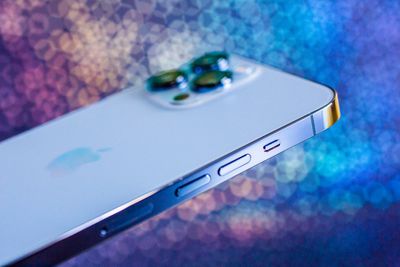
The finish is said to echo Apple's past use of lighter tones, particularly the iPhone 13 Pro's "Sierra Blue." That color marked a shift toward more subtle, pastel-like shades – metallic and icy, it shifted between blue and light gray depending on the lighting. Apple continued this trend with the softer, pastel finishes introduced in the iPhone 15 lineup.
Pricing Rumors
Premium or Affordable?
The Information reported that the slimmer iPhone 17 could have a higher price tag than the Pro Max model, which currently starts at $1,199, despite suggestions that it will not be as feature-rich as Apple's top-tier Max.

However, Haitong International analyst Jeff Pu believes the device will be a mid-tier iPhone that replaces the Plus model. Additionally, a report out of China has claimed that the ultra-thin iPhone 17's price will be similar to that of the iPhone 16 Plus, which starts at $899 in the United States. More recently, Bloomberg's Mark Gurman said he was told that the device may start at roughly $899 in the US, while a newer report by The Wall Street Journal has suggested that all iPhone 17 models may have higher prices than usual because of the impact of U.S. import tariffs on foreign goods.



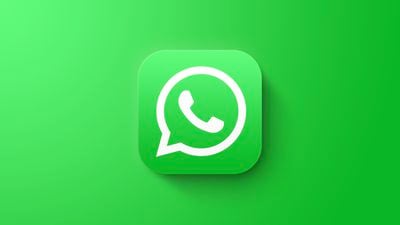

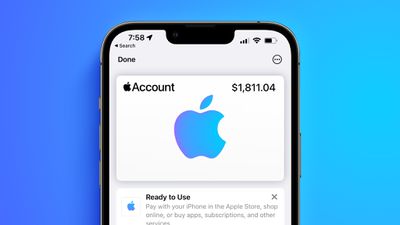
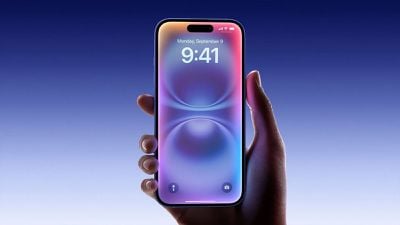

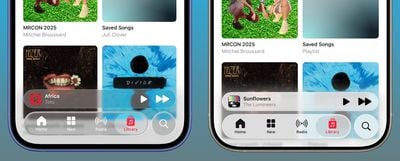



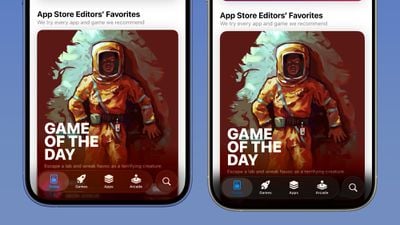 Light Mode
Light Mode










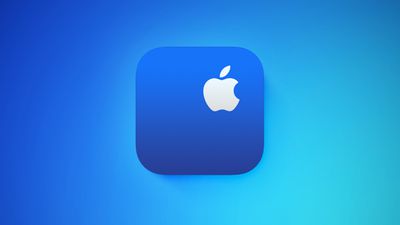

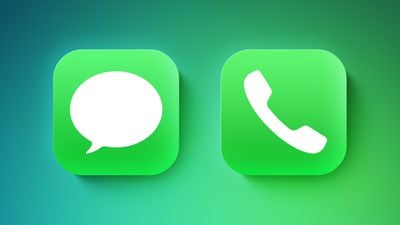
 Note: MacRumors is an affiliate partner with Amazon. When you click a link and make a purchase, we may receive a small payment, which helps us keep the site running.
Note: MacRumors is an affiliate partner with Amazon. When you click a link and make a purchase, we may receive a small payment, which helps us keep the site running.



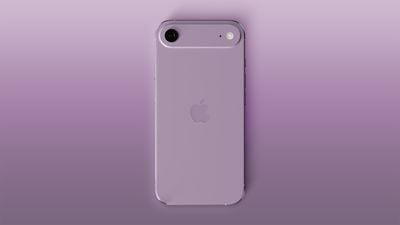


 Note: MacRumors is an affiliate partner with Amazon. When you click a link and make a purchase, we may receive a small payment, which helps us keep the site running.
Note: MacRumors is an affiliate partner with Amazon. When you click a link and make a purchase, we may receive a small payment, which helps us keep the site running.












